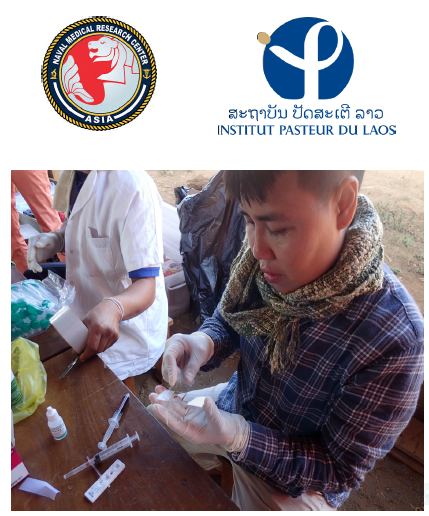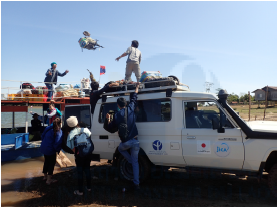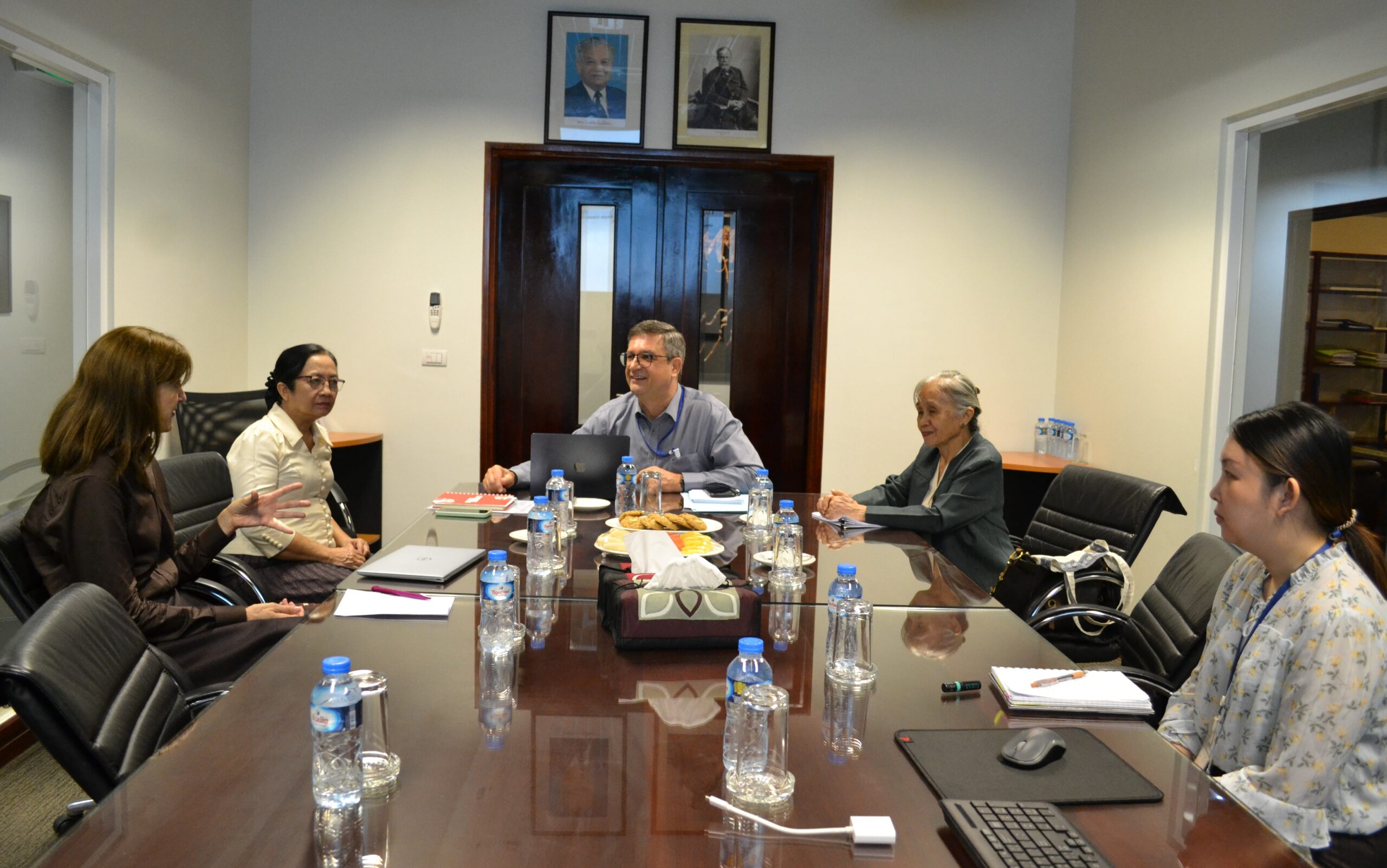BioLao Plus Project
 Project Coordinators: Dr. Virginie POMMELET
Project Coordinators: Dr. Virginie POMMELET
Partners:
Vientiane, Laos: Institut Pasteur du Laos (IPL)
Singapore: Naval Medical Research Center – Asia
(NMRC – A)
Vientiane, Laos: Microbiology Laboratory of Mahosot
Hospital
Staff members in Parasitology Lab, IPL:
Dr. Moritoshi IWAGAMI, Dr. Sengdeuane KEOMALAPHET, Ms. Pheovaly SOUNDALA, and Mr. Takashi SEKINE
Background
The BioLao Plus Project, “an integrated approach to detect emerging pathogens and assess the infectious disease burden of a remote area in Khammouane province in the Lao PDR” was initiated by IPL in September 2017 with financial support from Naval Medical Research Center – Asia (NMRC-A). This project was the first opportunity to bring together IPL’s 5 laboratories’ expertise in one field site. The role of the Lao-Japan Parasitology lab in this program is to investigate the situation of parasitic diseases (malaria and intestinal helminth) among villagers at study site villages in the Nakai district, Khammouane province.

Objective
To detect emerging and reemerging pathogens and assess the infectious disease burden of a remote area in Khammouane province, Lao PDR and to provide evidence (human and vector data) and ways to mitigate possible infections to health authorities and the villagers.
Methodology
Blood samples and stool samples were collected from the study participants for malaria and helminthiasis detection, respectively. Malaria RDT and stool examination by Kato-Katz method were performed on-site, whereas malaria PCR was performed at IPL using dried spot blood samples on filter papers.
Results and Discussion
Malaria study: A total of 191 blood samples were examined by malaria RDT and PCR. All of them were malaria negative in this study. No malaria case was detected in this study. However, the IPL entomology team found Anopheles mosquitoes in the study villages. This finding suggests that if a certain number of malaria patients or asymptomatic Plasmodium carriers are introduced into the villages, malaria transmission might occur among the villagers.
Helminthiasis study: One stool sample was collected from 126 participants and two stool samples were collected from 50 participants. Microscopic examination by Kato-Katz thick smear method revealed that multiple species infections were found in this study. Two species infection was 30.2% (38/126), and three species infection was 11.1% (14/126), whereas single-species infection was 38.9% (49/126). Only 19.8% (25/126) was helminthiasis free in this study participants. Predominant species was hookworm (60.3%: 76/126), and the second predominant species was Ascaris lumbricoides (50.8%: 64/126). In this study, Trichuris trichuria (11.1%: 14/126), Taenia (6.3%: 8/126) and Opisthorchis viverrini (3.2%: 4/126) were also detected. Most of the infections were categorized as either light or moderate-intensity infections. However, there is a risk of malnutrition among children if it becomes a heavy intensity infection. Therefore, the installation and proper use of latrine(s) for each village would be needed to improve their hygiene status and reduce the rate of infections.
Financial Support
This project was financially supported by NMRCA.








